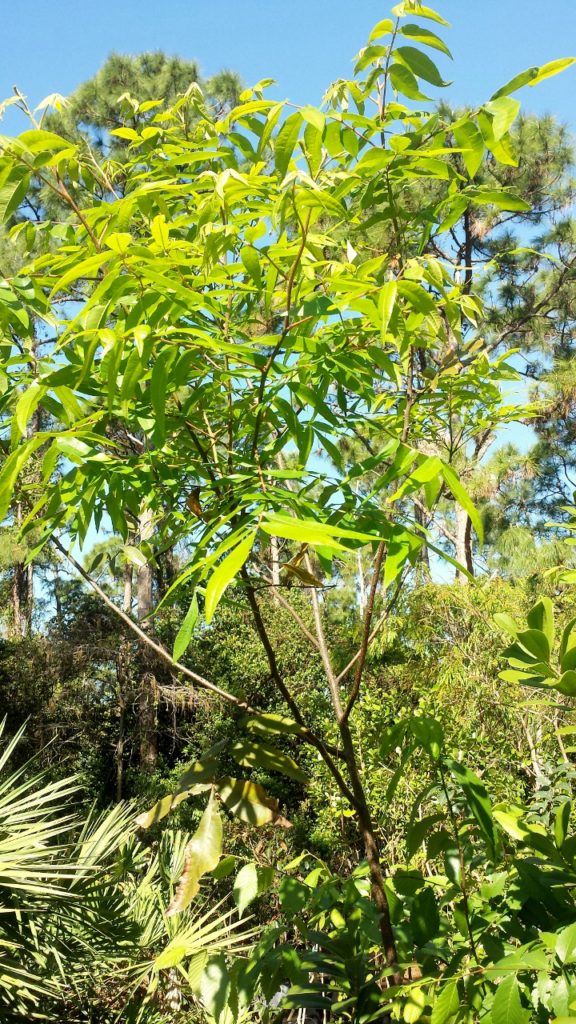
Water Hickory
Carya aquatica
Water Hickory is naturally found in floodplain soils from the eastern Carolinas to northern Palm Beach County and west to East Texas. It prefers rich, moist soil, yet will grow well in average soil. This becomes a tall, straight trunked tree with shaggy bark.
The deciduous pinnate leaves are up to 18 inches long and have as many as 17, six inch long leaflets. The underside of the leaf is rusty colored and the top is dark green. I like the bare trees in winter, they remind me of up north for a month or so.
Male and female flowers occur separately on the same tree. The flowers are wind pollinated and the pollen may cause allergies for some people. Squirrels, turkey, wood ducks and other wildlife eat the nuts. The meat is bitter, yet not poisonous.
Water Hickory is an important part of floodplains, as it removes excess nutrients from the soil and water. Think of our polluted retention pits in every parking lot in Florida and our community ponds. A mixture of Cypress, Red Maple, Water Hickory and Pond Apple planted in these depressions would clean the water and turn these wet areas into wildlife sanctuaries.
How about planting these trees along our canals? There are long stretches of culverts burying the canals to make room for more parking lots. The culverts should be removed and the now open banks planted with trees.
I like the mix of Water Hickory with Florida Elm, Red Maple, Red Mulberry, Hackberry, Persimmon, Cypress, Southern Red Cedar, Sweetgum, Pond Apple, Pop Ash, Slash Pine and Florida Royal Palm. The understory can be fern, Wild Coffee, Virginia Willow, Marlberry, Native Plumbago, and many other shade tolerant species.
Maybe it’s time to give large trees a home in South Florida and stop fretting over the remote possibility that in 100 years it might fall on your house. Do you drive? Now that’s scary.